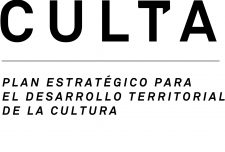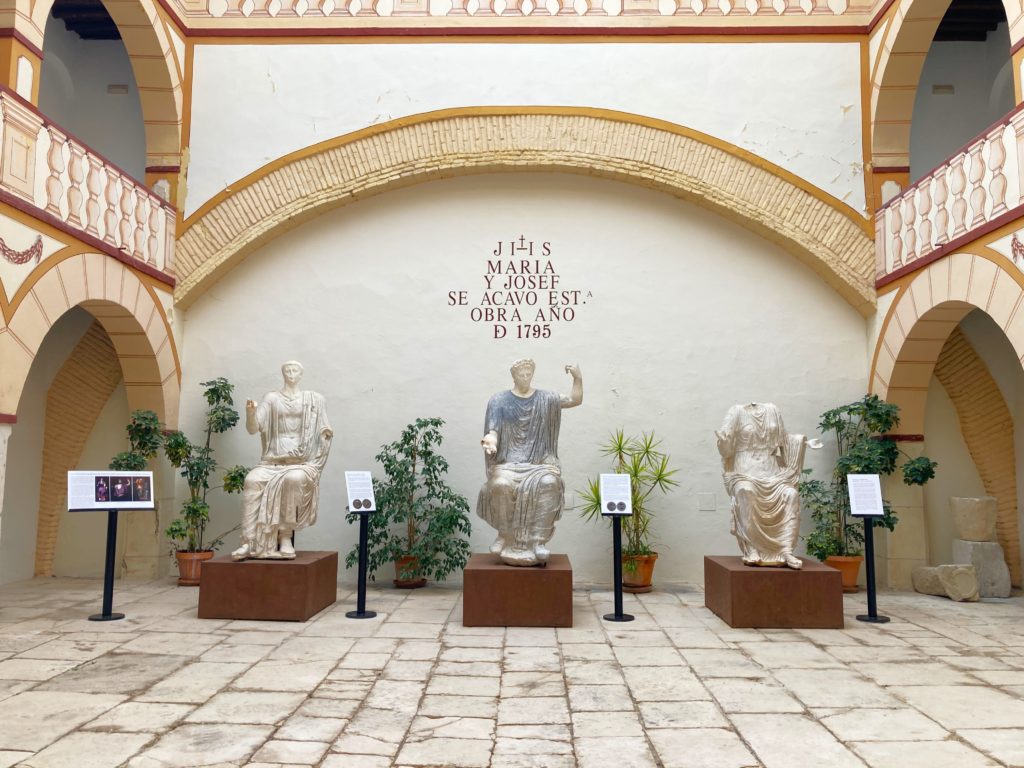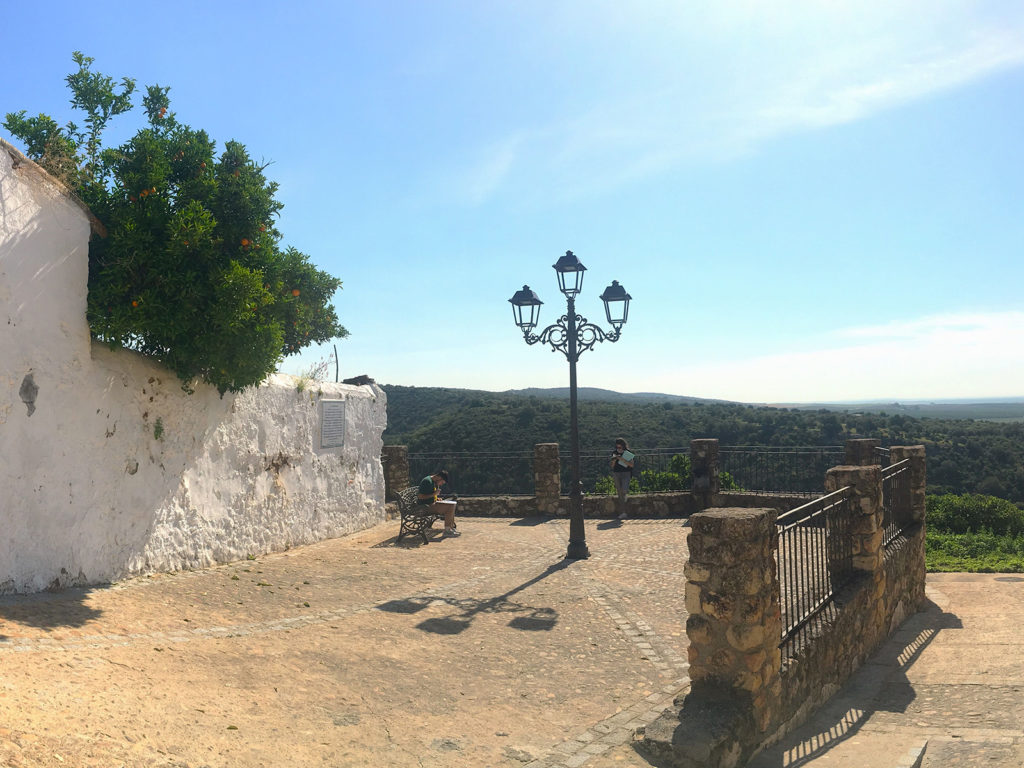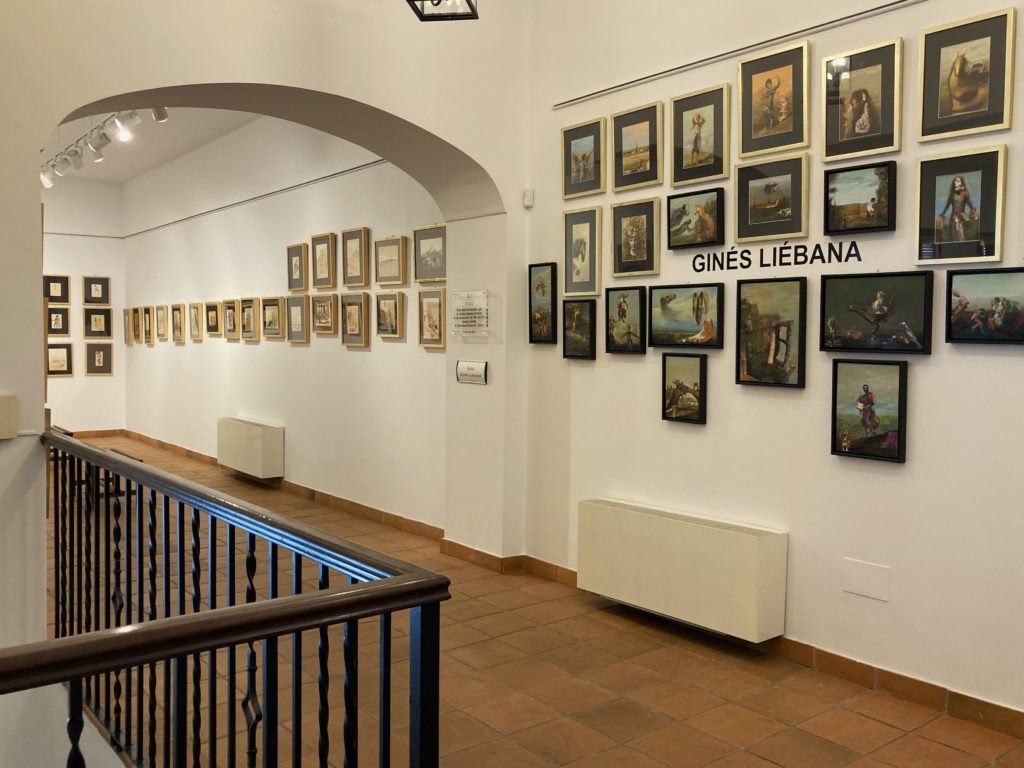
Map key
🟥 Containers. “Empty” spaces, with no established itineraries or zoning to determine the occupancy of the space.
🟨 Secuences. Cultural facilities characterized by the organization of their spaces, generating an itinerary.
🟪 Access points. They facilitate individual access to culture, analogically or digitally, assuming an individual and direct relationship between the person and the content.
🟦 Focals. They imply a focused attention for the viewers, directing their gaze towards a specific point in space.
🟩 Public spaces
No posts were found for provided query parameters.

► Download the full plan (phase 1: LAB)
► Download the full plan (phase 2)
The Strategic Plan for the Territorial Development of Culture in the Province of Córdoba (CULTA) aims to observe the urban phenomena through its close relationship with culture, defending its potential as a generator of urban relations.
Acknowledging the dense network of municipalities that make up the territory of Cordoba not only shows its geographical reality, but also its historical and, above all, cultural identity. The relationship between different poles is a phenomenon that generates synergies and complementarity in the territory. In this scenario, we see culture and its associated infrastructures as the material that blends and builds this urban archipelago of great potential.
Among the different aspects of culture, architecture is certainly a key element, due to its potential to transform the city and the territory, and its direct interference with the daily lives of citizens, as well as being an economic engine for the future of the province.
Both approaches take parallel ways of research and analysis, which will intersect in a synergic process: culture and cultural facilities, on the one hand; each of the municipalities of our province -to understand its urban and territorial, spatial and temporal, as well as social dimension-, on the other hand.
We also share the globally accepted criteria described in the New Urban Agenda. of Habitat III (2016): “Urban planning and legislation with sufficient public financing provide a useful framework for the adoption of urban resilience criteria. Without good urban planning, without legislation and good governance, without finance, even the best-designed plans will never come to fruition. In terms of planning, resilience strategies must support a positive model of urban development that must be compact, complex, inclusive and connected.”

Network synergy between municipalities
To establish the criteria for network synergy between the municipalities and counties of Cordoba, interpreting culture as a determining and active element in the territory, and taking advantage as well as valuing the cultural vocation of each county and municipality.
Optimization of cultural facilities
To analyze the current status and propose the optimization of the existing provincial facilities, as well as their relationship with the consolidation and activation of the municipalities and their public space. In short, with an urban vision in addition to architecture and use.
Culture as an engine of urban generation and regeneration
Encourage the understanding of culture and its potential as an engine for urban generation and regeneration, proposing management models, both for facilities and public space, encompassing new examples consolidated in the international arena.
Strategic actions
Define the methodological tools for the assimilation of this document over time, being assumed by the institutions and citizens in the face of the necessary strategic actions in terms of cultural infrastructures in their urban relationship.

In light blue, the municipalities analyzed in the phase 1. In blue-gray, those of the phase 2. [ZOOM]

Example of a potential area of influence in Castro del Río

Cultural system in Hornachuelos

Rose of indicators of a cultural facility. [ZOOM]
CULTA’s methodological tools are not only intended to serve researchers and experts, but also aim to generate, from the early stages of its implementation, participatory dynamics that encourage the active involvement of citizens throughout the process.
1. Delimitation of the scope of the studies
The drafting of the CULTA Plan is being developed in four phases of work, each of them contemplating a selection of municipalities to be studied. Those municipalities form a representative and coherent sample in relation to the territory of the entire province.
For Phase 1 of CULTA, understood as a lab phase, six municipalities were selected. They bring together different geographic and population situations, etc., in such a way that the great majority of municipalities in the province could be represented in them. The selected municipalities were: Alcaracejos (Valle de Los Pedroches), Fuente Obejuna (Valle del Guadiato), Hornachuelos (Valle Medio del Guadalquivir), Montoro (Alto Guadalquivir), Castro del Río (Campiña Este – Guadajoz) y Cabra (Subbética Cordobesa).
For the drafting of Phase 2 of CULTA, fourteen municipalities have been selected. Two in each region, this time choosing those with the largest population, as in later phases of the Plan, these will be the municipalities with which the smaller localities establish more fluid and recurrent connections. The municipalities selected for analysis were: Pozoblanco and Villanueva de Córdoba in the Valle de Los Pedroches, Peñarroya-Pueblonuevo and Villaviciosa de Córdoba in the Valle del Guadiato, Palma del Río and Posadas in the Valle Medio del Guadalquivir, Bujalance y Villa del Río in the Alto Guadalquivir, Baena and Nueva Carteya in the Campiña de Baena, Montilla and Puente Genil in the Campiña Sur, and Lucena and Priego de Córdoba in the Subbética Cordobesa.
2. Territorial analysis
In order to understand cultural activity, it is essential to understand the space in which it takes place. By analyzing these spaces on a territorial and urban scale, using the concept of potential area of influence, we will be able to understand how the territory where cultural manifestations are produced is structured.
3. Visual analysis and fieldwork
One of the works that we consider essential for the process of research and recognition of the existing cultural reality in each municipality is the visual recognition of the streets, cultural facilities and potential spaces for the development of cultural manifestations, which form a cultural system.
4. Forms
The form templates offered by Google Forms have been used to design surveys that can be filled out by both the technicians associated with the facilities and the group in charge of implementing the Plan.
5. Surveys
To obtain information about the cultural habits of the population of each selected municipality, surveys have been considered the most efficient and manageable tool, given the nature of the analysis and the time limits set.
6. System of indicators
We have also worked on a system of indicators developed after the forms. The objective is to show the strengths, weaknesses and improvable aspects of each facility, assigning qualitative values to the data obtained, in order to later represent them in a graph that allows the general state of the analyzed cultural facility to be seen at a glance.
7. Interviews
The process of conceptual definition and development of tools has been complemented with different phases of field work in which different agents have collaborated, including the local authorities of each of the municipalities, but also any individual who interested in participating actively in the process.
8. Focus groups
We have chosen this type of interview for its utility in generating a collective discourse that can provide us with an outline of the town’ s community reality in terms of culture. Rather than analyze a list of individual opinions about the state of culture in the municipality, we consider it interesting to look at how it is perceived from a social point of view, to avoid falling into a mere statement of specific individual needs.
9. Experts forums
With regard to the proposal part of the plan, in addition to basing ourselves on the data obtained through the analysis tools described above, we consider it necessary to arrange a series of meetings with various personalities from the world of culture and territorial development so that they can share their experiences and his point of view about how to establish strategic lines for the territorial development of culture.
The CULTA Plan does not seek to add new cultural programs and proposals to a long list of existing initiatives, but rather to propose an alternative methodological and epistemological approach that allows for the evolution of culture in its broadest sense as a vehicle for the development of societies and territories.
1
Strategies for cultural dinamization
We propose the mediation and integration of local practices and knowledge with contemporary proposals in a kind of cultural “grafting”, as opposed to the usual practice of cultural “parachuting”, which configures a living network in constant transformation and development.
2
Strategies for the development of cultural initiatives and projects
We understand that initiatives must go beyond voluntarism and amateurism, supported by an adequate guide to ensure their success.
3
Strategies for residency of culture and population
This line of action involves understanding culture not as mere leisure and free time, but as an occupation. It is therefore a matter of establishing the necessary material conditions to make it possible to develop culture-related occupations in any context.
4
Strategies to the continuity of cultural projects
We consider it key that cultural initiatives do not stem only from local administrations, and that they do not depend on them as the only source of sustainability. In other words, the aim is to build lasting and stable projects that are not subject to political and institutional fluctuations.
5
Strategies for the financing of culture
Since we understand that an initiative must be sustainable in any environment, and without undermining the importance of public funding in cultural matters, we propose methods such as cultural cooperatives or mixed funding tools like crowdfunding or matchfunding.
6
Strategies to move from the cultural objetc to the cultural subject
This point was already key in the Cultural Facilities and Infrastructure Plan of Cordoba (2010). We propose to overcome the cultural consumer/producer dichotomy in favor of a more complex and proactive subject, an intermediate figure who is able to participate in culture in multiple dimensions, which some authors call “prosumer”.
7
Strategies to communicate culture
We emphasize the importance of new information technologies in this regard, while taking into account the existence of other audiences. Therefore, the key is to favor proximity and to adapt the methods according to the cultural public we are addressing.
8
Strategies for shifting culture and making it accessible
As a result of the analyses carried out, the need for innovation in transportation systems is evident. In this sense, we value initiatives such as on-demand public transport.
9
Strategies for the integration of cultural heritage
Cultural heritage must move away from touristification and be understood as part of the community (Cultura Ciudadanía, 2017). This requires the existence of a sense of identity and representativeness, and a valuation by the populations. In this sense, the ecomuseum presents itself as an interesting alternative.
10
Strategies for cultural memory and intangible cultural practices
The enhancement of intangible cultural practices is vital for the development of societies, and this requires research resources, as well as a process of rich and deep cultural re-cognition.
Financing

Collaboration

























